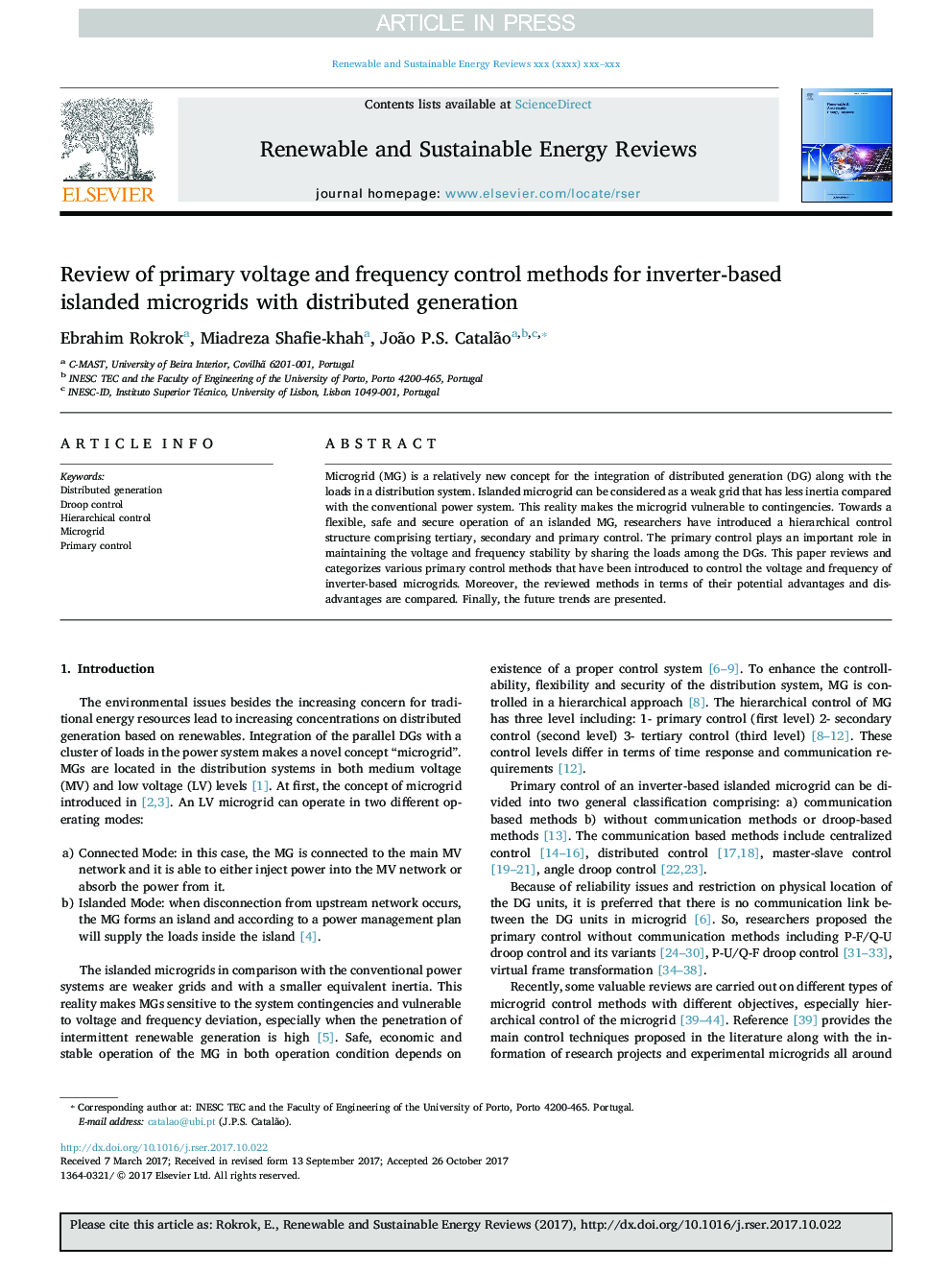| Article ID | Journal | Published Year | Pages | File Type |
|---|---|---|---|---|
| 8112057 | Renewable and Sustainable Energy Reviews | 2018 | 11 Pages |
Abstract
Microgrid (MG) is a relatively new concept for the integration of distributed generation (DG) along with the loads in a distribution system. Islanded microgrid can be considered as a weak grid that has less inertia compared with the conventional power system. This reality makes the microgrid vulnerable to contingencies. Towards a flexible, safe and secure operation of an islanded MG, researchers have introduced a hierarchical control structure comprising tertiary, secondary and primary control. The primary control plays an important role in maintaining the voltage and frequency stability by sharing the loads among the DGs. This paper reviews and categorizes various primary control methods that have been introduced to control the voltage and frequency of inverter-based microgrids. Moreover, the reviewed methods in terms of their potential advantages and disadvantages are compared. Finally, the future trends are presented.
Related Topics
Physical Sciences and Engineering
Energy
Renewable Energy, Sustainability and the Environment
Authors
Ebrahim Rokrok, Miadreza Shafie-khah, João P.S. Catalão,
